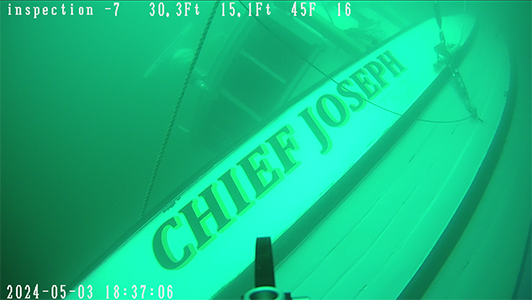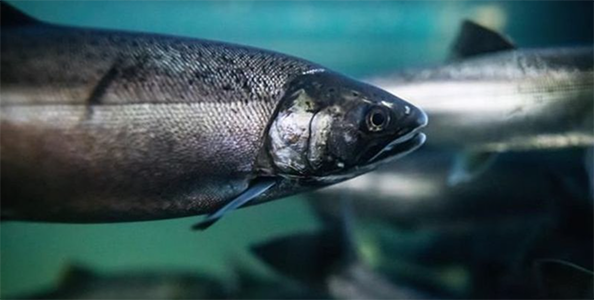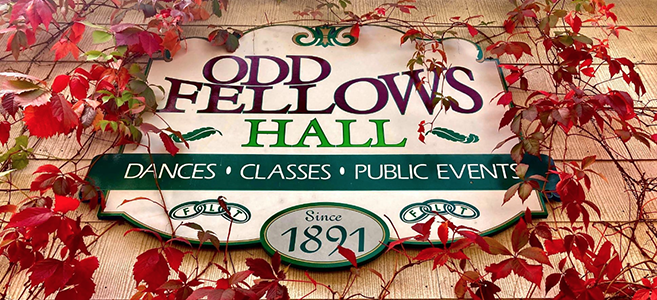||| MIDNIGHT MUTTERINGS by JACKIE BATES |||
Maybe you went to Wormapalooza: The Whys and How’s of Worm Composting, an event hosted by The Exchange, last fall. If you did, no need to read further here. If not, you should have gone and I should have too. And I would have if I had heard about it. I did not, even though it was apparently listed right here on The Orcasonian. How could I have missed that? Here’s an eight minute link to a commercial outfit I found on the announcement for Wormapalozza:
Well, I wish. When I try to copy the link to the video, I get a huge pix of the start of the video, so instead, here’s a link to the Wormapalooza announcement site, and if you click on that, you get another link for the video there. I first got inspired to try worm composting when I read Mary Appelhof’s self-published book Worms Eat My Garbage in 1982. Mary, a science teacher, died in 2005, but later editions have been published over the years. And, yes, Orcas Library has a copy which is available now If you’re the lucky one to put it on hold first. I think it’s still pretty current except for the growth of commercial worm bins and city-wide food waste composting programs across the nation.
I personally think this video is a lot more complicated than what I have used for homemade worm bins (a tub with lid, damp shredded newspaper, a handful of cornmeal and a cup of worms, and wait two weeks for them to get used to the idea.) After that, I just feed them every week, making sure not to overwhelm them with too much food until I find egg cases and babies. After that they can go through about a quart of food scraps/week which I cover with a damp newspaper. Or a burlap bag which lasts for months. (The less stirring the bin the better. Nobody likes to be disturbed while they are working.) All my bins over the decades are seeded with offspring worms from that first bin, and I have given away worms by the pint to people starting bins. I did mail order my first worms all those years ago, and got a call for the local Post Office to please pick them up as they were escaping their packaging.
But I did miss the announcement for the Wormapalooza somehow. I would have gone to find out what is new in the worm composting world. Which is not new to me as a concept. In fact I have had active worm composting bins for several decades and I currently have two. I keep mine in the basement during the winter and the garage in summer. I gave up trying to outwit the raccoons on the deck in the summer, and now I can’t imagine what I was thinking. Raccoons are way smarter than I have ever been. Anyway, the bins, if not overwhelmed, do not smell at all.
I’m not sure what is happening now, but there used to be bins in elementary school classrooms. Once in Seattle many years ago, a classroom dad built a wood worm bin with a glass window covered by a sliding panel and the kids never got tired of checking on the worms. Of course, if the wood panel was left off too long, the worms hid from the light, so we used that as a way of helping primary students learn to read analog clocks. (“What time will it be in fifteen minutes and where will the hands of the clock be then?”) And plenty of other life and conservation lessons. Those worms were great teachers.
So why am I writing this? Because I think home worm composting bins are a stunningly wonderful idea, and it’s hard for me to think of a more effective or easier way to keep things out of the landfill that don’t need to be there. And that we don’t need to be paying for the hauling and transfer of things (food scraps) that shouldn’t be hauled to the landfill where they won’t decay satisfactorily in the first place. What they will do is produce methane — a greenhouse gas. In fact the second most common greenhouse gas, after CO2.
Before I go any further, there are, now, alternatives to worm bins and outdoor compost heaps on the market, ranging in price from $219 to $599 before tax, that sit on your kitchen counter and rapidly (overnight) compost a small amount of food waste. I’m not sure about electricity consumption, but they look like a good alternative to worms if you have a lot of money and plenty of good real estate available on your kitchen counter. I don’t know anyone who has one, and I haven’t read much about them except for one called LOMI that regularly sends me ads, which don’t interest me as there’s no room on my kitchen counter and my OPALCO bill just keeps going up. Also, worm composting has worked wonderfully for me for four decades. Well, the countertop composters do process some things that worms don’t handle well, like meat, ‘soft’ bones, onions and citrus peels. Onion and citrus peels go in my outdoor compost and the few meat and fish scraps from my kitchen go in the freezer for visits to the Bellingham cats. I don’t really have any bones, but if I did, I’d take them to Bellingham, as well, to go in the food waste bin. (More on that later.)
My current bins are commercial Can-O-Worms which were gifts more than twenty years ago. Quite wonderful, they have three trays and a base with a four inch lip. When you empty the bottom tray of the finished ‘black gold,’ you put the empty tray on top, add bedding and food. The worms make their way upward by way of holes in the bottoms of the trays. The whole outfit sits on four long legs and the lipped bottom panel collects the liquid from the upper trays, which can be released into a jar by way of a valve. Amazing fertilizer, that leachate can be diluted and fed sparingly to plants. It’s very powerful, as is the worm compost in the bottom bin. Several YouTube videos about the Can-of-Worms are available. I have been watching them lately. Can-O-Worms really makes worm bin care even easier than the homemade variety, especially harvesting the vermicompost. And they should, coming in as they do at over $100 each. They used to be imported from Australia, made from recycled plastic. Maybe made in U.S. now. I don’t know.
Bellingham, like many cities, has a food waste collection program. It’s pretty expensive, $30-40/month, but very convenient. It can take paper and cardboard contaminated containers (which I burn in the wood stove here on Orcas) and any other food and yard waste, which is composted in bulk and is for sale back to the community for gardens and landscaping. I can’t imagine that coming to Orcas at this time as it requires extra transportation and composting facilities, and so meanwhile, yard composting and worm bins seem the best option. I don’t empty my worm bins of worm compost very often as they don’t really fill up very quickly. It’s almost as if the kitchen waste is disappeared. My garden beds seem to be plenty fertile just from using the No Dig method popularized by Charles Dowding in the UK, though his are much prettier than my weedy patches. I also have small outside compost bins to which I add occasional kelp and dry eel grass from my beach. I appreciate the worm bins as they are protected from raiding by raccoons and rats. (Fallen apples keep the neighborhood rats interested enough.)
If Wormapalooza returns, I’ll be there this time and I hope to see you there. Meanwhile, YouTube can meet all your worm composting information needs for the moment.
Meanwhile, there are lots of interesting things about earthworms besides garbage disposal and worm castings for fertilizer from composting worms. Two things I learned from reading (probably) Sally Coulthard’s The Book of the Earthworm, published in 2021: that (A) when Charles Darwin returned from Galapagos voyages on which he was magnificently seasick, his interest turned to earthworms. He apparently stuck tiny pieces of folded paper into the ground to see how long it took earthworms to pull them underground. (I’m not sure how that contributed to the evolution theory.) And (B) non-native earthworms accidentally introduced by European immigrants along with their plants negatively affected North American Forests. So worms are interesting in their own right, and may be as essential to human survival as pollinators. At the very least, the smallest of us, even bacteria and viruses, may be serious contributors to the survival of all of us.
You don’t have to remind me that I’m the keeper of cats, who would, if they were allowed outside, cheerfully murder their weights in innocent songbirds that they wouldn’t even eat. And Rose, in particular, is a mighty hunter of insects, including bees, who suicidally enter the glass porch, where Rose dispatches them to whatever pollinator afterlife exists.








